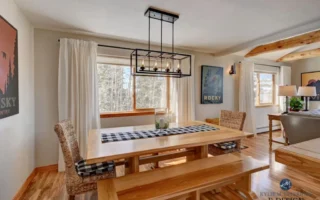Covering brick walls is an important aspect of home maintenance that many homeowners overlook. Not only does it enhance the aesthetic appeal of your property, but it also protects the structure from the elements. In this blog post, we will explore how to cover a brick wall outside, discussing various materials available and the unique benefits each one offers.
Choosing the right material to cover your brick wall can significantly affect your home’s appearance and longevity. This article aims to provide you with a detailed overview of the best materials for covering brick walls, helping you make an informed decision that suits your needs and preferences.
Understanding Brick Walls

Characteristics of Brick Walls
Brick walls are known for their durability and weather resistance. They can withstand various environmental conditions, making them a popular choice for many homes. However, while brick walls are sturdy, they can also present a few challenges when left uncovered.
Durability and Weather Resistance
Bricks are incredibly durable and can last for decades. They resist wind, rain, and even fire, making them a safe option for construction. However, over time, exposure to moisture can lead to deterioration.
Aesthetic Appeal
Exposed brick walls can be visually appealing, offering a rustic charm that many homeowners love. However, not everyone is fond of this look, and some might prefer a more polished finish.
Common Issues with Exposed Brick Walls
While brick walls have their advantages, they also come with common issues, including:
- Moisture Penetration: Rain and humidity can seep into the bricks, causing damage and mold growth.
- Aesthetic Concerns: The look of exposed bricks may not fit every homeowner’s style.
Importance of Choosing the Right Covering Material
Choosing the right covering material is essential to protect your brick walls from moisture and enhance your home’s appearance. The right material can provide insulation, improve aesthetics, and extend the life of your brick walls.
Factors to Consider When Choosing a Covering Material

Climate and Weather Conditions
One of the first factors to consider is your local climate. If you live in an area with heavy rains or extreme temperatures, you’ll want a material that can withstand these conditions.
Purpose of Covering
Consider why you’re covering the brick wall. Is it for insulation, aesthetics, or protection? Each purpose may lead you to different materials.
Cost Considerations
Budget is always a crucial factor. Some materials may be more affordable upfront but could require more maintenance in the long run.
Maintenance Requirements
Different materials have varying maintenance needs. It’s essential to consider how much time and effort you’re willing to invest in upkeep.
Popular Materials for Covering Brick Walls

When it comes to covering brick walls, several options stand out. Let’s dive into the most popular materials and their pros and cons.
Siding
Overview of Different Types of Siding
Siding is a versatile option that comes in various materials, including:
- Vinyl
- Wood
- Fiber Cement
Pros and Cons of Using Siding
Pros:
- Easy to install
- Wide range of styles and colors
- Low maintenance (especially vinyl)
Cons:
- Can be less durable than other options
- May require replacement after several years
Installation Process and Considerations
Installing siding involves measuring your brick wall, cutting the siding to fit, and attaching it securely. It’s essential to ensure that the siding is properly ventilated to avoid moisture issues.
Stucco
Description of Stucco as a Covering Material
Stucco is a mixture of cement, sand, and lime that creates a hard, durable surface.
Benefits of Stucco
- Insulation: Provides excellent thermal insulation.
- Aesthetic Versatility: Can be painted and textured in various ways.
Application Techniques and Maintenance Tips
Stucco is typically applied in multiple layers. Regular inspections for cracks and chips are essential for maintenance.
Brick Veneer
Explanation of Brick Veneer as a Covering Option
Brick veneer is a thin layer of brick that can be applied over existing brick walls.
Advantages of Using Brick Veneer
- Aesthetic Appeal: Offers the classic look of brick.
- Durability: Provides an extra layer of protection.
Installation Methods and Considerations
Installing brick veneer involves using mortar to attach the veneer to the existing wall. Proper waterproofing is crucial to prevent moisture issues.
Paint
Overview of Painting Brick Walls
Painting is a straightforward way to cover brick walls and change their appearance dramatically.
Types of Paint Suitable for Brick
- Exterior Paint: Specifically designed for outdoor use.
- Interior Paint: Not recommended for exterior use due to weather resistance.
Preparation and Application Process
Before painting, clean the brick surface thoroughly and apply a primer. Use a roller or spray paint for even coverage.
Innovative Covering Options
As trends evolve, so do the materials available for covering brick walls. Here are some innovative options to consider.
Use of Natural Materials
Using natural materials like wood or bamboo can add warmth and character to your home. These materials are often sustainable and eco-friendly.
Composite Materials and Their Benefits
Composite materials combine different substances to create a more durable and versatile option. They can mimic the look of wood or stone while offering better weather resistance.
Eco-Friendly Options
Consider using recycled materials or sustainable practices when selecting your covering. This approach not only helps the environment but can also enhance your home’s appeal.
Maintenance Tips for Covered Brick Walls

Routine Maintenance for Different Covering Materials
Each covering material has specific maintenance needs. Regular inspections and cleaning can extend their lifespan.
Signs of Wear and When to Re-Cover
Watch for signs like peeling paint, cracks, or mold growth. These can indicate that it’s time to re-cover or repair your walls.
Importance of Periodic Inspections
Routine checks can help you catch problems early, saving you money and preventing extensive damage.
Conclusion
In summary, covering your brick walls is a vital part of home maintenance that can enhance both the appearance and durability of your property. By understanding the characteristics of brick and the various materials available, you can make an informed decision that best suits your needs.
Whether you opt for siding, stucco, brick veneer, or paint, consider factors such as climate, purpose, cost, and maintenance.




